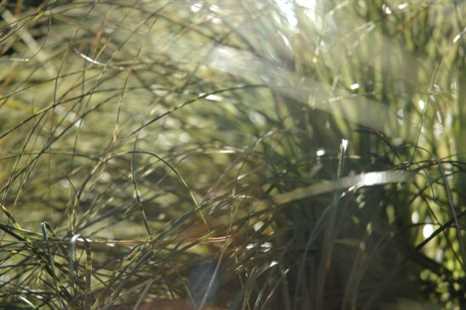Pubished Articles by Jeremy
To be notified when new writings are published, please
click here to add your email
to the mailing list.
Note: Links will open new tabs/windows.
Published July 2018 by Goodtherapy - The therapeutic journey (of life and therapy) toward Self
"So much of therapy—so much of life in general—is unraveling childhood conditioning and learning to be kind to ourselves. And many of us have no reference for this idea. We will not dare believe it until experiencing felt bodily safety while being fully seen by another human."
Popular Article:

Published February 2018 by Goodtherapy - Explores the experience of living in avoidant strategies and offers ideas for stepping out of these patterns
"We often resent those closest to us for their perceived judgment and rejection, for crossing boundaries we never articulated, or for not knowing how to draw us out from our silence (that to us is speaking volumes). From our perspective, we’ve been sending out very clear signals that nobody is picking up."
Popular Article:

Published May 2017 by Goodtherapy - Presents growth opportunities and understanding for both sides in extreme attachment dynamics
"When things get too close and comfortable, the anxious side stops chasing, questions, or may sabotage. At least there is control in when the “inevitable” abandonment happens. Conversely, when things get too distant, the avoidant has been known to switch tactics, even take over the pursuer role. A tolerable level of intimacy/distance is maintained between the strategies of both extremes."
Popular Article:

Published February 2017 by Goodtherapy - Frames attachment styles as a 'trauma cascade'
"Our trauma reactions are hardwired into these vessels we inhabit. The theory of a “defense cascade,” supported by Porges’ polyvagal theory, suggests our trauma responses occur in a specific sequence: we move from our “social nervous system” to “fight or flight” and then to “freeze.”
The work of Peter Levine, developer of Somatic Experiencing®, supports another idea: longer-held, character-shaping postures that are often the response to ongoing or repeated trauma also occur in sequence. To escape from these postures, then, it may be necessary to traverse the sequence in reverse: from freeze, through fight or flight, and then back to social connection."
Popular Article:

Published August 2016 by Goodtherapy - Changing generational attachment patterns
"The “old stuff”—the things we carry from the past—cycles through our lives, in and out. We hold it in glimpses of childhood, images and emotions that are sometimes disconnected from one another. We carry mud puddles and faces, toys, bedrooms, yards. We hold memories of clouds, angles of sunlight on the side of a shed."
Popular Article:

Published June 2016 by Goodtherapy - The integration of internal 'parts'
"If we reframe “preoccupation” as the ongoing abandonment feelings of an inner child, we begin to differentiate from the part feeling the pain. This is important for the present-day adult who feels hijacked by emotions. It is also vitally important for the hurting child (or the old neural network that takes over) to have a compassionate internal witness."
Published January 2016 by Goodtherapy - The integration of internal 'parts'
"Healing comes through integration, balancing of extremes, an olive branch offered between “enemies,” an internal dialogue of acceptance and compassion. It requires access to some part of Self that can simply observe—some witness able to watch our thoughts and emotions without landing in them, without becoming them."
Published January 2016 by Goodtherapy - The development of 'parts' of Self
"Those who seek therapy for complex trauma often do so unknowingly. They may first notice depression or anxiety, numbness, spaciness, lack of motivation, or a failure to connect or thrive."
Published October 2015 by Goodtherapy - gradual steps to self realization
"Without an internal observer, we fail to recognize and differentiate various sides in our internal conflicts. Rather than checking in at a bodily level and noticing a drip, we remain unaware of any water until it becomes a flood, until it grows so vast that we can no longer ignore it. It washes us away."
Published September 2015 by Goodtherapy - An introduction to two sides of the nervous system and the felt experience of each side
"No amount of analysis, planning, or rumination will change our experience of life. We cannot think our way out of this story."
Published April 2015 by Goodtherapy - What would you believe if nobody taught you what to believe?
"Hakomi includes a process of noticing, exploring, and allowing what is. We learn to sit with physical reactions as we explore judgments, memories of their origins, and the actual feeling of both containing and being contained."
Published March 2015 by Goodtherapy - When Self is defined by Other, the presence of a compassionate and attuned Other redefines Self.
"Attunement does not change who we are. It changes the way we relate to who we are. It affects our awareness and expression of Self. It directly affects our comfort from moment to moment by promoting internal conflict or integration—framing Self as enemy or ally."
Popular Article:

Published February 2015 by Goodtherapy - Describing the transition from distant numbness to present life
"Big names in trauma, including Peter Levine and Bessel van der Kolk, advocate not for desensitization approaches that dull perception (repetitive reprocessing of trauma), but for practices that resensitize somatically to awareness of the present moment, the physical narrative, and an embodied experience of safety and control."
Published January 2015 by Goodtherapy - The lifelong development of a body-based narrative
"Using sensory input to navigate, to take in, we organize and rationalize the information streaming into our bodies. Unique to each of us are our senses and our translation of those signals. (Green to my eyes may not be the same green you see.) As that translation happens, we incorporate the meaning of each signal into our already-present narrative of life, our blueprint, our historical template of experience."
Popular Article:

Published December 2014 by Goodtherapy - Breaking free of the 'freeze' response, or escaping the trap of 'learned helplessness'
"To some degree, the concept of limited internal power and limitless external power remains an essential component of complex trauma. Fatalism (or 'learned helplessness') is a debilitating side effect of experienced oppression. In many, the freeze response includes disengagement from life—an intentional separation from anger, power, and movement."
Published November 2014 by Goodtherapy - The intention of 'loving-kindness' allows a level of intimacy not often found in traditional talk therapies.
"Love happens between humans, and Hakomi is a very human practice."
Published October 2014 by Goodtherapy - Especially for those divorced from their body, living in the head, Hakomi can be a resensitizing process - one that brings with it a higher sensitivity to pains from which we originally separated or dissociated.
"To sit mindfully, for some, especially in the presence of another, feels intolerable … initially. So we move gradually into the process, in little bits, with ongoing education, feedback, and consent. Once we’re sitting with it—just the physical experience of it—and realizing we are OK in the moment, we then realize space to notice the judgments, the memories, the traumas. Everything moves from judgment/panic into compassion/curiosity."
Published September 2014 by Goodtherapy - The nervous system and physical / social threats
"Most of us read each person’s emotional responses continuously, often unconsciously. We emote. We express. And we watch reactions. When the reactions are repeatedly negative—when they are reactive and harsh, as they commonly are during a stress response—we stop emoting. We contain parts of Self."
Published July 2014 by Goodtherapy - Satisfying the analytical need to understand the process of Hakomi before allowing it
"The one-sentence explanation: Hakomi is a nonviolent, collaborative, mindful process, providing and allowing multiple ways to (1) map your internal experience, (2) change core beliefs, and (3) integrate conflicting parts of self."
Published June 2014 by Goodtherapy - An introduction to Hakomi Body-Based Psychotherapy
"This is all about safety."
"Hakomi provides that hard-to-imagine safe place. The principles of Hakomi allow a certain culture in the therapy room: peace, curiosity, experimentation, alliance, non-attachment, non-judgment, flexibility, softness, freedom, exploration. We are simply observing and honoring. The therapist has no agenda. The compassionate, constructive model of Hakomi renders “pathology” just another judgment, separate from self."
On Lifekey Website
January 2017 - Basic Summary of Attachment Styles
October 2014 - Another way to view trauma
"Some cultures hold the view that such internal violence loosens our orientation and attachment to views that no longer serve us… From this perspective, trauma-wounding-stress-chaos initiates a process of transformation or transcendence – allowing us to come face to face with parts of self and experience previously avoided…to shed egos/identities to which we have devoted so much energy…and realize we are more content and free in their absence."





 to the mailing list.
to the mailing list.























 (Part 2)
(Part 2) (Part 1)
(Part 1)



